
Background information
«Risk» – is it ok if I conquer, err, liberate Ukraine?
by Martin Jungfer

At the advanced age of 31, I bought my first ever Interrail Pass. Doing so didn’t just give me a piece of Europe – it also got me acquainted with the perils of its various rail operators. Here’s my report of the journey.
I didn’t want to fly to London. With two long-haul flights under my belt for this year already, my carbon footprint wasn’t looking particularly good. So, I decided to make my way to the Royal Military Academy Sandhurst by train. My friend’s sister had just finished her training to become a Second Lieutenant; an occasion that would be celebrated with a military parade followed by a ball, to which I was an invited guest. A bit of trivia for any fans of the British royals: Prince William and Prince Harry are graduates of the very same academy.
An Interrail Pass turned out to be the best value option, even with the reservation fees charged by the TGV and Eurostar. The app accompanying it was wonderfully simple to use. I was able to add and remove train journeys at any time, all of which were combined into a single QR ticket.
The train journey itself, however, turned out to be slightly more complicated.
Without any discernible cause, the TGV from Zurich to Paris racks up delays, meaning I nearly miss the Eurostar departing from a different station in Paris. At least some nice members of staff let me push to the front of passport control and baggage check queues. In the end, I even board the train with six minutes to spare. Two and a half hours later, I’m on the other side of the Channel Tunnel, at London St Pancras. All that’s left to do is take the underground to Paddington Station and head to Reading from there.
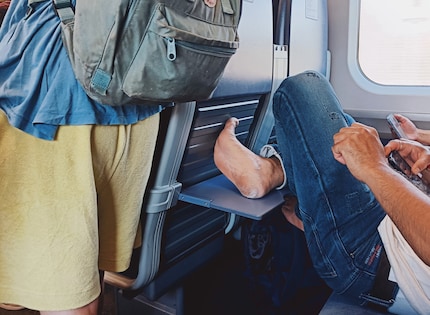
This wouldn’t be an issue if half the British railway staff weren’t on strike at the moment, wiping a number of train journeys off the timetable. Still, at least there’s time for a cold Coca-Cola. The Great Western Railway train, with its modern design and air-conditioned carriages is also able to placate me.
It’s there that I start researching the English railway system. There hasn’t been a British Railway equivalent to Swiss Federal Railways (SBB) since the «Railways Act 1993» came into force in 1994. Margaret Thatcher and her conservative Tories split the former «British Rail» into 100 different companies with the goal of maximising profit.
It didn’t make train travel in England any cheaper, but it did make it more attractive. At least that’s what the figures say – passenger numbers doubled during the years following privatisation.
Mark Smith, creator of The Man in Seat 61, the best website for railway aficionados, says so too: «Rolling stock and track access costs are beyond franchised operators’ control». According to the former Department for Transport staffer, timetables and principle fares also remain regulated. «So what can private operators do to make money? Raise revenue from attracting more passengers!»
And that’s certainly what they’re doing. At least in London, both the trains and stations are crowded. Even so, I have a relatively comfortable journey to Reading. However, I did travel almost exclusively on high-speed trains.
That changes when I activate my Interrail Pass on day two. After dancing the night away with young members of the British army, I’ve arrived back in London. I set off from a nice hotel with a view of the wooden Jesus on the nearby church, and head for Antwerp. Since the allocated seats for interrailers on the Eurostar have been fully booked for ages, I opt to cross the English Channel by ferry.
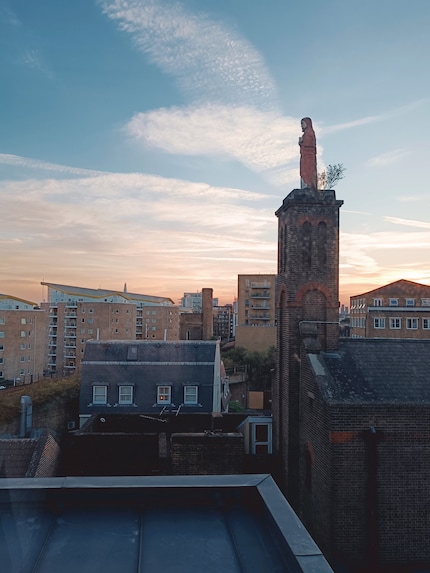
First, though, I need to get from London to Dover. Ten minutes before my train out of the packed St Pancras station is due to depart, I start to get nervous. The platform still hasn’t been displayed. Along with dozens of other passengers, my eyes stay glued to the large departure board until finally, three minutes before departure, something happens. The train to Dover leaves from the rear of platform 3 from sector C. As if everyone has been simultaneously bitten by a tarantula, the crowd shoots off in the direction of the train. It’s a system that takes some getting used to. At this point, I commend the Swiss SBB and its penchant for routine. The Interregio from Zurich main station to my hometown Lenzburg almost always leaves from either platform 15 or 16. If not, I’m alerted soon enough via app or in the train station.
As I don’t have a stroller or a suitcase with me, I’m even able to bag a seat to Dover, where I end up arriving 20 minutes later than planned. It all goes downhill from there.
I need to hot foot the three kilometres to the port. Bus connections? Not a chance. For a Swiss native used to regular bus services in even the most isolated of mountain villages, it’s actually quite baffling that there’s no public transport between the station and the port. At 5,317 kilometres (on a surface of 41,285 square kilometres), the Swiss railroad network is one of the densest in the world and sometimes makes me wonder why people still own cars at all. The situation in Dover serves as a stark reminder of why.
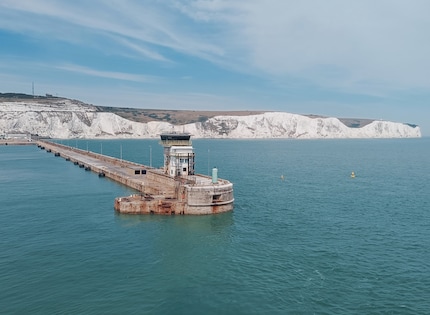
Despite all this, I make it to the ferry three minutes before the check-in desk closes (perhaps down to some rather ambitious time management on my part). On the bus, which takes pedestrians from passport control to the baggage check to the boat, it also becomes clear to me why practically nobody’s missing a bus route between the station and the port. Only backpackers and a few musicians make the crossing without a car. The latter serenade everyone from the smoking deck, which at least makes the journey pretty entertaining.
Arriving in Calais, it’s the same story as Dover: no bus to the station. The only difference being that the way would be even longer and go along the motorway. I’m only able to use the conditional tense here because of a kindly Belgian, who shared the Uber he’d booked to take him into town with me and some others. After a visit to the «Carrefour Express» to stock up on snacks, the display board in the small station greets me with a lovely «supprimé» (cancelled) under every single journey. Strikes have broken out in France too. At least I eventually find out that there’s a replacement bus leaving for the TGV station from a side street, meaning I make it to Lille on time.
I spend ages googling suitable connections to Antwerp. If I type in the entire route, the French (SNCF) and Belgian (SNCB) throw me just a fraction of the results I get by putting in the individual sections of the route (Lille – Brussels, Brussels – Antwerp).
«The European rail industry is insanely fragmented», says train expert Smith. He goes on to give some tips: «I use www.bahn.de as a universal timetable. www.thetrainline.com is useful too because it still brings the ticketing systems from Spain, France, Germany, Austria, Switzerland, Italy and the Benelux countries together.» For the rest of the countries, every ticket needs to be purchased individually from the websites of each rail operator involved. And the prices are in no way coherent either. «Tickets for Switzerland and Italy can either be bought from SBB or Trenitalia. Trentalia, however, is generally cheaper than SBB, especially if you’re going further than Milan. That’s because SBB doesn’t have access to Trenitalia’s cheap advance fares for train journey within Italy. It’s because of situations like this that I started Seat 61.»
Surprisingly, I arrive in Antwerp two hours earlier than expected. Unlike with the Interrail timetable online, in Lille, I’m able to reserve a seat on the TGV to Brussels, even bagging a free upgrade to first class in the process. However, the employee at the desk tells me that the connecting bus going via Tournai, that I saw online, is totally non-existent. If I hadn’t checked with her, I’d have spent the night in Lille. After 12 hours and 40 minutes of travel time, I step off the regional train at 10 p.m. into the beautiful Antwerp train station. The whole thing would’ve taken 5 hours and 19 minutes by car.
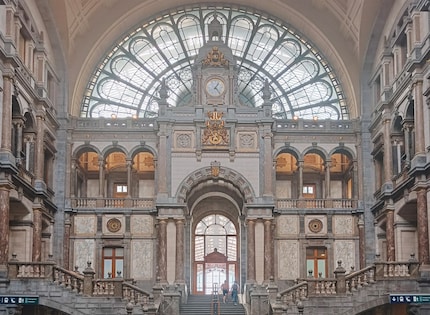
I don’t feel like paying extra for seat reservations on the way through France, so I opt to travel via Germany. For the first time, I’m able to type the departure and destination into the Interrail app and get a well-paced trip with dozens of stops and no surcharges. I’m just a bit iffy about the five-minute transfer in Brussels. The last time I took a train in Belgium, massive delays almost caused me to miss my flight. On this occasion, however, I don’t need to rush to change platforms. And I get to see houses, fields and even the Cologne Cathedral whizzing by on the way to Frankfurt.
In Frankfurt, I’m more surprised by the meagre food selection (about 14 stands with almost identical sandwich displays, but barely anything else) than I am about the Inter City Express’s negligible 15-minute delay. It even manages to win back three lost minutes before reaching Zurich. I’ve had quite an array of experience with Deutsche Bahn (German Rail) – including a small bout of food poisoning I acquired from a station-bought schnitzel sandwich on the way back from Berlin.
Back home in bed, I reflect on my «short trip». I’ve experienced a lot, seen a lot and stared at plenty of departure boards and online timetables. Again and again, I was forced to be flexible and patient. It made me realise that SBB, with its two-minute delays and infrequent platform changes is first-class as far as national rail networks go. No wonder the «European Railway Performance Index» crowned it the best in Europe in terms of passenger numbers, punctuality, kilometres travelled per passenger and accidents.
My life in a nutshell? On a quest to broaden my horizon. I love discovering and learning new skills and I see a chance to experience something new in everything – be it travelling, reading, cooking, movies or DIY.
Interesting facts about products, behind-the-scenes looks at manufacturers and deep-dives on interesting people.
Show all
Background information
by Martin Jungfer
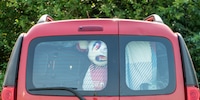
Background information
by Michael Restin

Background information
by Ann-Kathrin Schäfer